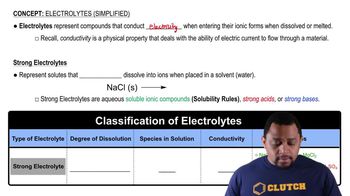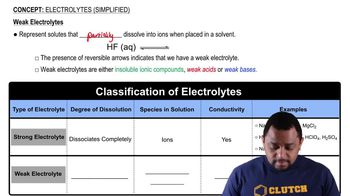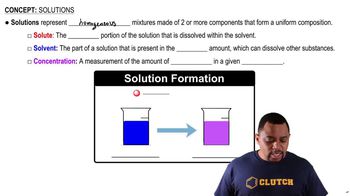Select the diagram (1, 2, or 3) that represents the solution formed by a solute represented by?
<IMAGE>
that is a (9.2)
a. nonelectrolyte
<IMAGE>
 Verified step by step guidance
Verified step by step guidance Verified video answer for a similar problem:
Verified video answer for a similar problem:



 2:38m
2:38mMaster Electrolytes (Simplified) Concept 1 with a bite sized video explanation from Jules
Start learning